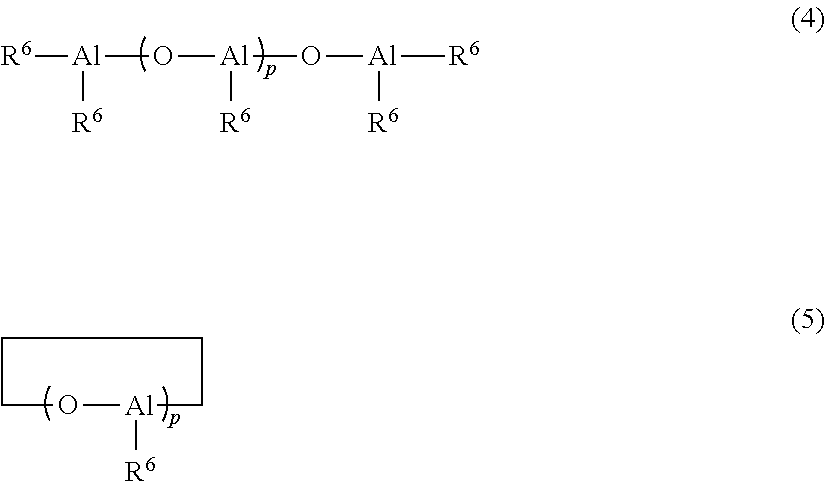Process for preparing vulcanized rubber composition, vulcanized rubber composition and studless tire using same
a technology of vulcanized rubber and composition, which is applied in the field of preparing vulcanized rubber composition, vulcanized rubber composition and studless tires using same, can solve the problems of difficult to improve both properties simultaneously, reduce the friction coefficient of tires, and difficult to achieve good balance and improve the performance of ice and abrasion resistance of obtained vulcanized rubber composition
- Summary
- Abstract
- Description
- Claims
- Application Information
AI Technical Summary
Benefits of technology
Problems solved by technology
Method used
Image
Examples
preparation example 1
(1) Synthesis of Conjugated Diene Polymer
[0156]A catalytic composition (iodine atom / lanthanoid-containing compound (molar ratio)=2.0) was obtained by subjecting a cyclohexane solution containing 0.18 mmol of neodymium versatate, a toluene solution containing 3.6 mmol of methyl alumoxane, a toluene solution containing 6.7 mmol of diisobutyl aluminum hydride and a toluene solution containing 0.36 mmol of trimethylsilyliodide to reaction and maturation over 60 minutes at 30° C. with 0.90 mmol of 1,3-butadiene. Subsequently, 2.4 kg of cyclohexane and 300 g of 1,3-butadiene were added into a 5 liter autoclave under a nitrogen atmosphere. Then the above catalytic composition was added into the autoclave, followed by 2-hour polymerization reaction at 30° C. to obtain a polymer solution. A reaction conversion ratio of the added 1,3-butadiene rubber was substantially 100%.
[0157]Here, in order to measure various physical properties of the conjugated diene polymer (h...
PUM
| Property | Measurement | Unit |
|---|---|---|
| temperature | aaaaa | aaaaa |
| Mass | aaaaa | aaaaa |
| molecular structure | aaaaa | aaaaa |
Abstract
Description
Claims
Application Information
 Login to View More
Login to View More - R&D
- Intellectual Property
- Life Sciences
- Materials
- Tech Scout
- Unparalleled Data Quality
- Higher Quality Content
- 60% Fewer Hallucinations
Browse by: Latest US Patents, China's latest patents, Technical Efficacy Thesaurus, Application Domain, Technology Topic, Popular Technical Reports.
© 2025 PatSnap. All rights reserved.Legal|Privacy policy|Modern Slavery Act Transparency Statement|Sitemap|About US| Contact US: help@patsnap.com


